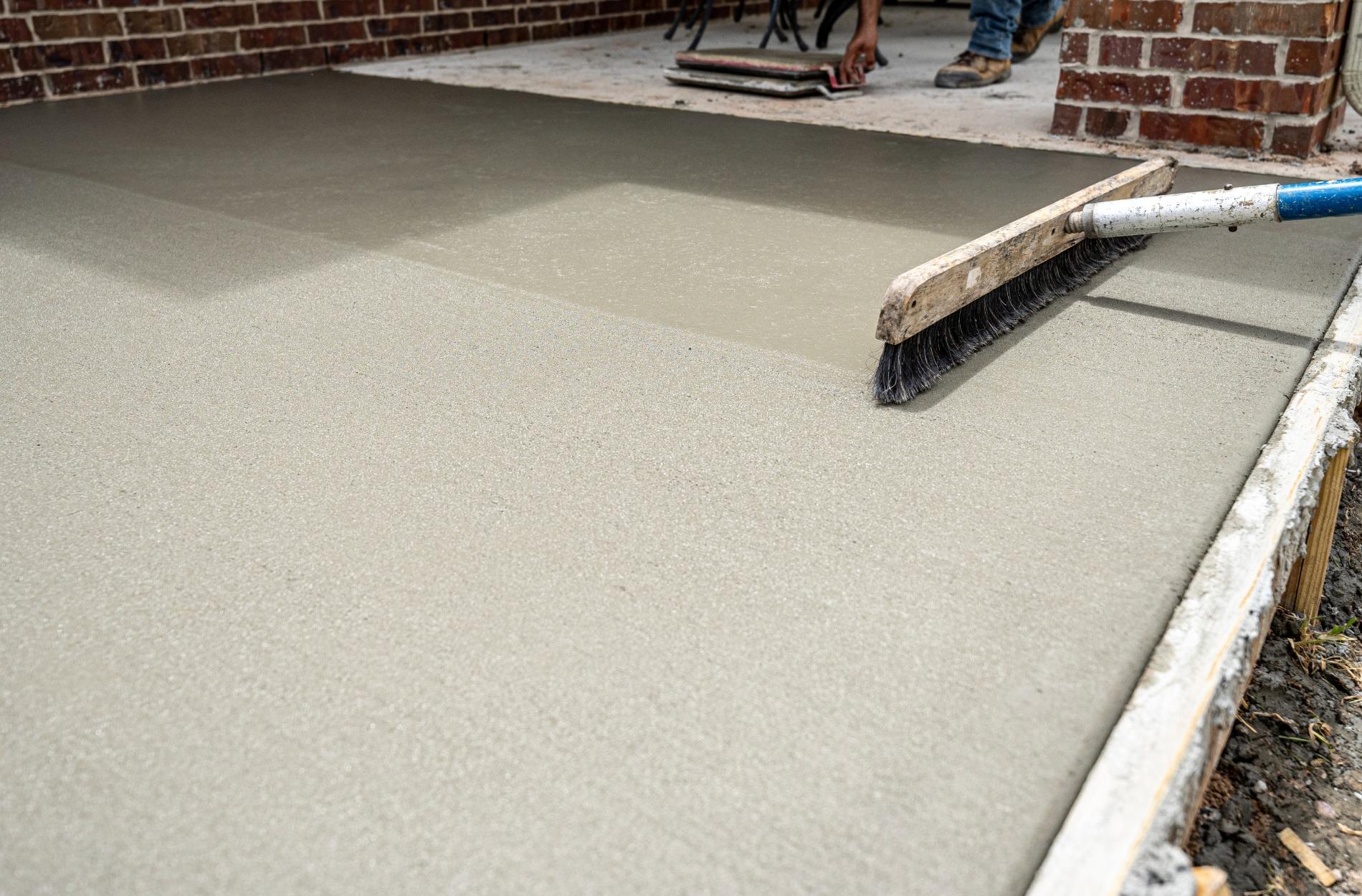Fall in Cleveland brings cooler days, damp ground, and early signs that winter is close. Once mornings turn cold and leaves pile up, every outdoor job takes extra planning. If you are thinking about concrete patio installation this time of year, keep in mind that weather affects the whole process. Building a solid patio in the fall is possible, but the right timing and a handful of smart steps make all the difference.
Patios, walkways, and concrete spaces see heavy use through all seasons across Northeast Ohio. From our experience, one week might feel like summer and the next brings frost or a steady drizzle. If the ground is not ready or the concrete does not have time to cure before a deep freeze, the whole project is at risk. These tips help homeowners in Cleveland get ahead of the cold while the ground is still workable.
Know the Local Weather Before You Pour
Cleveland weather does not always stick to the calendar. You can enjoy mild afternoons in October, then wake up to frost without warning. Cold snaps, windy days, and quick drops in temperature all impact how concrete cures and gains strength. If unexpected freezing hits before the concrete is set, it ends up weaker and more likely to crack.
Fall is still a workable time for patio projects, but the time frame is tight. The warmer it is during and after the pour, the better the results. Concrete needs a few warm days to begin setting, or else curing slows down so much that the surface becomes fragile.
The best start is by checking the forecast ahead. Watch for a spell of weather when highs linger in the 50s for at least a few days and there are no threats of freezing overnight. Daily lows below freezing can cause real trouble, even if those cold hours only last until sunrise. Letting concrete dry for several uninterrupted days helps keep it strong when winter weather rolls in.
Why Ground Conditions Matter in the Fall
Even with good weather, the ground itself needs the right conditions. In autumn, soil can be soaked from repeated rain, and leaves often trap water close to the surface. Pouring concrete over soggy, soft ground almost guarantees problems in the future.
Fallen leaves, hidden roots, and soft patches all affect how stable the patio will be long-term. The base matters just as much as the surface. You want a base that does not shift or give. The area should be fully cleared and given time to dry if the soil holds too much water.
Poor drainage or an unnoticed slope might not seem like a big deal now, but those small problems can shift the concrete later. You might see dips, gaps, or whole sections pulling away from the house as the freeze-thaw cycle kicks in after winter. Many patio cracks and gaps start because the ground was not stable from the start.
A dry and stable base is critical, especially right now when the chance for error gets slimmer with every passing week. Contractors often use compacted gravel or sand as a base layer to help avoid shifting and to improve drainage below the slab, which can help concrete patios last longer in Northeast Ohio’s changing climate.
Timing Your Project Right
Most crews in Northeast Ohio consider mid to late October the last call for outdoor concrete work. By then, the weather turns unpredictable and frost is likely. When frost hits, you have to move quickly or hold off until spring.
Getting your patio project on the calendar early gives you options and avoids rushing. Pushing the job too late means you risk either skipping important steps or pouring in a hurry—neither is good if you want the patio to last. Rushed installations can cause surface cracks, crumbling corners, or spots that settle unevenly.
When you schedule early, there is less pressure to finish before the next big freeze. That leads to better results and lower stress for everyone involved. Fall projects can work well, but only if the weather, ground, and materials are all lined up at the right time.
Cold-Weather Curing: What to Watch For
When concrete is poured and it turns cold too soon, the curing process slows or stops. If the top layer stays wet for too long, you can end up with cracks or a soft finish that does not hold up over time. Nobody wants to walk on a patio that starts crumbling after just one winter.
Sometimes covering fresh concrete with insulated blankets or plastic sheeting helps trap the warmth. In colder weeks, contractors may use small heated tents or add warm water to the concrete mix to help the reaction start. Every extra degree helps, but these steps must be handled carefully to avoid drying the surface too quickly or unevenly.
Professional installers in Cleveland are prepared for late-season concrete pours and often use these cold-weather tactics to give patios their best start. The goal is to let the concrete build up enough strength before the first hard freeze. That sets up the patio to stay smooth and safe through the roughest weather.
Long-Term Durability Starts with Smart Choices
A concrete patio installed in fall can last just as long as a summer project when done right. The keys are prep work, smart weather choices, and using the right finishing touches to protect the surface.
Some contractors in the Cleveland area add curing agents that help the concrete set properly in cool conditions. They might apply sealers right after the final finish or return later before winter hits to make sure moisture stays out. These extra steps matter a lot once snow, ice, and constant thawing become everyday issues. A well-sealed patio will handle Ohio’s freeze-thaw cycles much better, with fewer cracks and less shifting once spring arrives.
Planning concrete patio installation around seasonal weather—watching for those windows of dry, mild days and using products that protect against early freeze—can make a real difference in the life of your patio. Attention during installation pays off for years down the road.
Make Your Patio Work Year-Round
The secret to a fall patio that stands up to Cleveland’s climate is all about timing, close watching, and being patient with the process. Concrete patio installation in the Cleveland area works best when you keep an eye on the weather, wait for good ground conditions, and do not cut corners during install.
A well-installed fall patio will survive the first snows, stand up to spring thaw, and look just as good when the weather warms again. Care taken now means fewer cracks, no sinking corners, and a space ready for cookouts and relaxing once winter melts away.
If a new patio is on your list this season, there is still a narrow window to get the timing right. Waiting too long means possible patch jobs in the spring. With solid prep, the right base, and good scheduling, your patio can be poured this fall and ready for many seasons ahead. Contractors serving the Cleveland area, like those at Class 1 Pavers & Remodelers, can handle patio pours, base prep, and sealing—helping patios last longer and stand up to all kinds of Ohio weather.
Planning ahead can make all the difference when you want your patio to hold up through Cleveland’s changing seasons. Cooler weather can actually help, especially when timing and preparation are done right. A well-managed pour and proper surface prep go a long way during a concrete patio installation. At Class 1 Pavers & Remodelers, we’ve worked through enough Northeast Ohio fall projects to know what lasts. Give us a call and let’s talk about what makes sense for your home.



